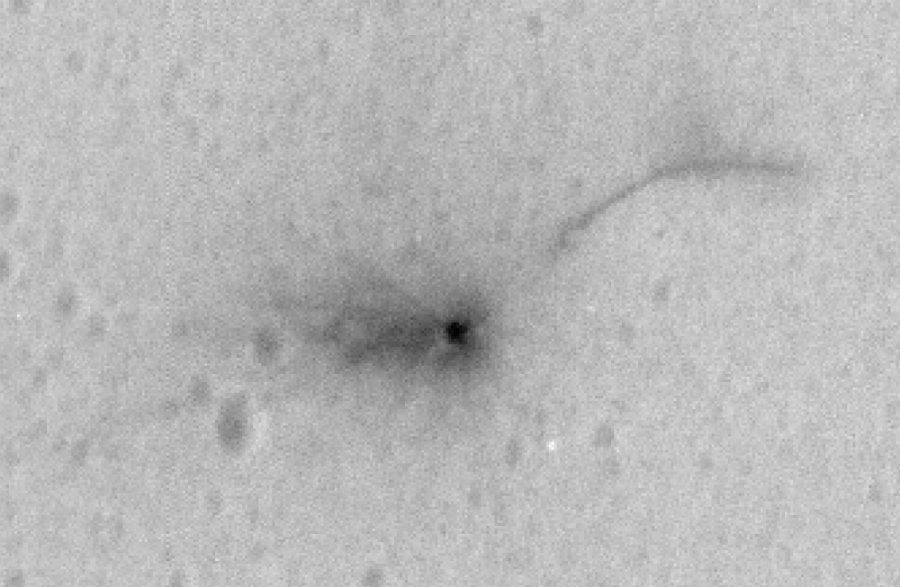European Space Agency’s Schiaparelli crashed on Mars when it tried to land on the planet’s surface last week. New images show the crater the lander created after its impact and possible explosion, and reveal new information about what failed in the landing attempt.
Europe’s ExoMars lander left a 1.6 feet (0.5 meters)-deep crater. The impact on the Red Planet was nearly 8 feet (2.4 meters)-wide, according to images captured by a NASA Mars orbiter on Tuesday, October 25.}

Schiaparelli’s great impact pictures reveal some details that can help determine what failed in the landing, helping to prevent another accident in the second phase of the ExoMars mission.
The images show asymmetrical marks that suggest that the lander was traveling at a low angle to the ground. But to explain the accident, Schiaparelli should have been descending much perpendicular to the surface.
According to ESA officials, it is possible the hydrazine propellant tanks in the module exploded in one direction, throwing fragments of the lander to Mars surface. The theory must be confirmed yet, and the agency is waiting for more evidence to get to a conclusion.
In the images, an additional long, dark arc can be seen to the upper right of the black crater, but ESA does not have a theory to tried to explain how it was formed. The agency believes it is also related to the crash, but it cannot confirm anything yet.
Near the crater, the images reveal a bright feature that scientists are almost confident that is Schiaparelli’s parachute, which is 39-foot-wide. The images also show a gray disk below the bright object which could be Schiaparelli’s rear heat shield. There is also a second bright feature near the crash site, and ESA officials think it might be the lander’s front heat shield.
“The mottled bright and dark appearance of this feature is interpreted as reflections from the multilayered thermal insulation that covers the inside of the front heat shield. Further imaging from different angles should be able to confirm this interpretation,” ESA reported Thursday.
Hopefully, the Trace Gas Orbiter will not crash as Schiaparelli did
Both the Schiaparelli and the Trace Gas Orbiter were launched in March 2016 as part of the ExoMars 2016 mission. The launching was the first phase of ESA’s project which counted with the collaboration of the Russian federal space agency Roscosmos.
The ExoMars team is working around the clock to collect as much information as possible about the crash to prevent any dysfunction in the second phase of the mission. Schiaparelli’s purpose was to test different technologies needed to land the Trace Gas Orbiter. ESA officials stated that the data gathered during the lander’s descent, even when it crashed, is useful for the second phase of the mission.
The next step of the ExoMars project consists on landing a life-hunting rover on Mars’ surface by 2021.
Source: Space.com
